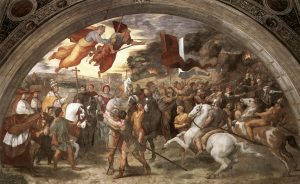Known as the “Scourge of God,” Attila the Hun, for some, could be considered the evilest ruler in history. For his enemies, this reputation translated into fear. There were instances when battles did not occur because of the fear of the Huns. Likewise, numerous losses transpired, especially when the Huns, during his reign, invaded or raided around 100 cities. It also meant treasures, gold, and slaves acquired for the empire.
If military conquests are one basis of achievements, the Hunnic king is one of the most accomplished in human history. However, these military conquests served as only a part of his provision of national goals for the Huns – to control Slavic and Germanic nations, march towards Asia and Africa, and rule over Constantinople and Rome. He achieved some of these goals for the empire, but he also had other feats, triumphs, and success worthy of his place in antiquity.
Business and Profit in Peacetime
The Hun Empire during Attila’s reign benefitted from annual tributes from the Roman Empire. This tribute system began in 422 AD with 350 pounds of solid gold and increased to 700 in 440 AD and 2,100 in 480 AD. However, even at the onset of the Attila’s reign and its peacetime, some had to pay as much as 2,100 pounds of gold. This practice lasted until 441 AD. While this saved the empire money from taking risky military actions, it also underlined how the king’s actions showed extortion during peacetime while in wartime, it was plunder. There is a business and profit component in Attila’s rule that served as an accomplishment because of the money given and gained during times of peace.
Near Perfect Military Record
In 441 AD, the Huns broke their peace treaty and began attacking the Eastern Roman Empire. Incapable of defeating the Hunnic army, the Romans knew they had to exact more tribute. It limited the attacks for some time, but between 447 and 449 AD, attacks on the eastern Roman Empire resumed more drastically. One of the main battles during this time was the Battle of the Utus led by general Arnegisclus, and even with combined forces from the Roman side, the Huns remained victorious.
Afterward, the Hunnic forces marched through the Balkan region and reached northern Greece. This war with the eastern Roman Empire ended in 449 AD. Even though the Constantinople conquest did not occur, the Romans were forced to provide tributes and treasures to the Huns. Hence, the years from 447 to 449 AD resulted in a triumph for gaining more tributes, loot, and leverage for the empire of Attila even with losses with their forces.
In 450 or 451 AD, the Huns began moving toward the western Roman Empire. This move went per Emperor Valentinian’s sister, Honoria, who Attila thought proposed for their marriage. The Hunnic king asked for territories for dowry, but Rome rejected. The result was an attempt to invade Italy and other territories.
In 452 AD, the Hun Empire marched toward Rome. However, before reaching the capital, they invaded Gaul or present-day France and lay siege to Orleans. The next significant confrontation occurred in the Battle of the Catalunian Plains, which had the Roman side create an alliance with other barbarians. The Roman alliance defeated the Huns and marked the first and only defeat of Attila.
These military campaigns signified the achievement of Attila in warfare with only one defeat. Likewise, the victories entail looting and plunder for the benefit of the empire. Indeed, losses accumulated in terms of fatalities, but the gains economically and control provided leverage and advantages for the Huns. For their enemies, the military meant the destruction of property and loss of life. For the victors, it provided fear and a peak for the Hun Empire.
Expansion
The Hun Empire’s expansion reached the Balkan region and some parts of the Roman Empire. Although the empire was a loose coalition of tribes that Attila bounded together, it was still a military might in the region and period. Roughly based in modern-day Kazakhstan, the Hunnic Empire was able to invade and expand its reach into Greece, Gaul (modern-day France), and Italy, among others. Some accounts note Attila claimed half of the Western Roman Empire.
A Life Worth Living Than in the Roman Empire
One historical account pointed out how life with the Huns was better than within the Roman Empire because of injustice, corruption, and taxation in the latter. Attila, described as merciful, wise, and generous, provided better conditions for his people, and this insight came from a Roman diplomat and Greek historian, Priscus.
The Hunnic ruler also knew the possibilities of expanding the empire and the effect of Roman luxuries. In response, he controlled movement across the frontier while also making a decree that no Hun could reside or serve in the Roman world. It translated into the control of the people, which could be limiting for some. However, these actions and choices of the king preserved the empire’s way of life that was free or lacking apparent corruption, injustices, and unfair taxation.
Another perspective was observable in the king’s temperance and simplicity. During a feast, servants provided guests with dishes full of meat on silver plates along with other luxurious meals from loaves of bread to viands. Meanwhile, the Hunnic ruler ate meat only on a wooden plate and drank in a wooden cup, while others had goblets of gold and silver. The clothes he wore were not adorned and were quite simple. Based on these accounts, he did not let himself be seduced by wealth and focused on providing for his guests and subjects. It showed positive treatment and served as a sign of a better life for guests and citizens of the Hun Empire.
